Eject renames encrypted files by adding victim’s ID, cynthia-it@protonmail.com email address and appending the “.eject” extension to their filenames. For instance, it renames a file named “1.jpg” to “1.jpg.id[1E857D00-2833].[cynthia-it@protonmail.com].eject”, “2.jpg” to “2.jpg.id[1E857D00-2833].[cynthia-it@protonmail.com].eject”, and so on. Both pop-up window (“info.hta”) and text file “info.txt” contain instructions on how to contact Eject’s developers and some and some other details. 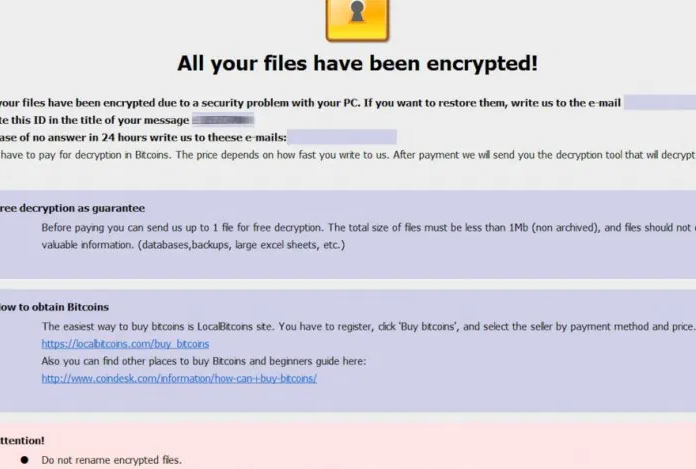
The ransomware known as Eject ransomware is classified as a severe threat, due to the possible harm it might cause. Ransomware is not something every person has heard of, and if it is your first time encountering it, you will learn the hard way how how much damage it may do. Powerful encryption algorithms are used by ransomware for data encryption, and once they’re locked, your access to them will be prevented. Because file decryption isn’t always possible, in addition to the effort it takes to get everything back to normal, ransomware is believed to be one of the most dangerous malware you could encounter. You do have the option of paying the ransom to get a decryption utility, but we do not encourage that. First of all, you may end up just wasting your money for nothing because crooks don’t always recover files after payment. Keep in mind that you are dealing with crooks who will likely not feel compelled to restore your files when they have the option of just taking your money. The cyber criminals’ future activities would also be supported by that money. Ransomware is already costing a lot of money to businesses, do you really want to be supporting that. When people give into the demands, file encrypting malware gradually becomes more profitable, thus drawing more people who are lured by easy money. Investing the amount that is requested of you into reliable backup would be a much better decision because if you ever come across this type of situation again, you file loss wouldn’t worry you as they would be recoverable from backup. You could then proceed to data recovery after you fix Eject ransomware virus or similar infections. If you are unsure about how you got the contamination, the most common methods will be explained in the following paragraph.
Ransomware distribution methods
Most frequent data encoding malware spread ways include via spam emails, exploit kits and malicious downloads. A lot of ransomware depend on users carelessly opening email attachments and don’t have to use more elaborate ways. That doesn’t mean that spreaders don’t use more elaborate ways at all, however. All crooks need to do is add an infected file to an email, write some kind of text, and falsely state to be from a legitimate company/organization. Those emails commonly discuss money because due to the delicacy of the topic, users are more prone to opening them. And if someone who pretends to be Amazon was to email a user about dubious activity in their account or a purchase, the account owner may panic, turn careless as a result and end up opening the added file. When you are dealing with emails, there are certain signs to look out for if you wish to shield your device. Check if the sender is familiar to you before opening the file added to the email, and if they aren’t known to you, check them carefully. Even if you know the sender, you should not rush, first check the email address to ensure it matches the address you know belongs to that person/company. Grammar mistakes are also a sign that the email might not be what you think. Another common characteristic is the lack of your name in the greeting, if someone whose email you should definitely open were to email you, they would definitely know your name and use it instead of a universal greeting, like Customer or Member. Out-of-date software vulnerabilities may also be used for contaminating. A program has vulnerabilities that can be exploited by data encoding malicious programs but they are regularly patched by vendors. As has been proven by WannaCry, however, not everyone is that quick to update their software. Situations where malware uses vulnerabilities to get in is why it’s critical that you update your software often. Constantly being bothered about updates might get bothersome, so you can set them up to install automatically.
How does it behave
Your files will be encoded by ransomware as soon as it infects your computer. Your files will not be accessible, so even if you do not see what is going in the beginning, you will know something is not right eventually. You’ll notice that a file extension has been added to all encoded files, which could help recognize the ransomware. Your data could have been encrypted using powerful encryption algorithms, and there is a possibility that they could be permanently locked. A ransom notification will reveal what has happened to your files. The suggested decryptor will not come free, of course. If the price for a decryptor isn’t specified, you would have to contact the criminals, normally through the address they provide to see how much and how to pay. Obviously, we do not suggest you pay, for the reasons already discussed. Only consider paying when you have tried all other options. Maybe you’ve forgotten that you have backed up your files. Or maybe a free decryptor has been developed. If the file encoding malware is crackable, a malware specialist could be able to release a decryption program for free. Take that option into consideration and only when you are certain a free decryptor is not an option, should you even think about complying with the demands. Using part of that money to purchase some kind of backup might turn out to be better. If you had made backup before infection happened, you ought to be able to restore them from there after you uninstall Eject ransomware virus. If you familiarize yourself with data encrypting malicious program’s distribution methods, preventing an infection shouldn’t be a big deal. Make sure you install up update whenever an update becomes available, you don’t open random files attached to emails, and you only download things from trustworthy sources.
Eject ransomware removal
a malware removal software will be necessary if you want the data encrypting malicious program to be gone entirely. It may be tricky to manually fix Eject ransomware virus because a mistake might lead to further harm. Using an anti-malware tool is a better choice. These kinds of utilities are created with the intention of detecting or even stopping these kinds of infections. Find a trustworthy tool, and once it’s installed, scan your device to find the infection. However unfortunate it may be, an anti-malware utility it’s not capable of decrypting your data. If the ransomware has been terminated entirely, restore your files from where you are keeping them stored, and if you don’t have it, start using it.
Offers
Download Removal Toolto scan for Eject ransomwareUse our recommended removal tool to scan for Eject ransomware. Trial version of provides detection of computer threats like Eject ransomware and assists in its removal for FREE. You can delete detected registry entries, files and processes yourself or purchase a full version.
More information about SpyWarrior and Uninstall Instructions. Please review SpyWarrior EULA and Privacy Policy. SpyWarrior scanner is free. If it detects a malware, purchase its full version to remove it.

WiperSoft Review Details WiperSoft (www.wipersoft.com) is a security tool that provides real-time security from potential threats. Nowadays, many users tend to download free software from the Intern ...
Download|more


Is MacKeeper a virus? MacKeeper is not a virus, nor is it a scam. While there are various opinions about the program on the Internet, a lot of the people who so notoriously hate the program have neve ...
Download|more


While the creators of MalwareBytes anti-malware have not been in this business for long time, they make up for it with their enthusiastic approach. Statistic from such websites like CNET shows that th ...
Download|more
Quick Menu
Step 1. Delete Eject ransomware using Safe Mode with Networking.
Remove Eject ransomware from Windows 7/Windows Vista/Windows XP
- Click on Start and select Shutdown.
- Choose Restart and click OK.

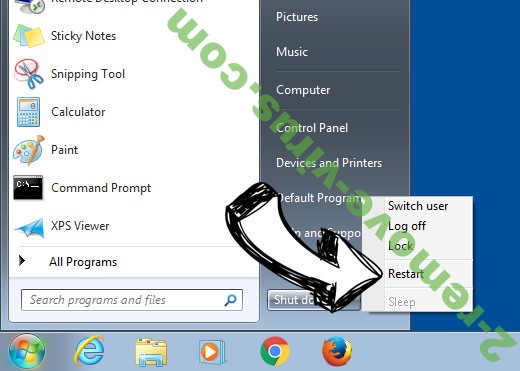
- Start tapping F8 when your PC starts loading.
- Under Advanced Boot Options, choose Safe Mode with Networking.

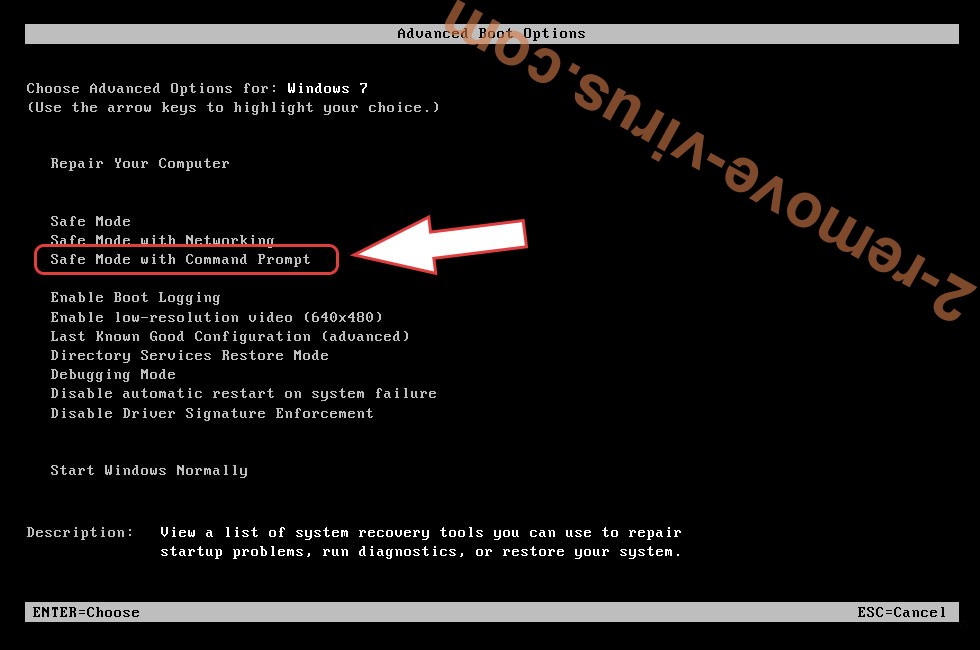
- Open your browser and download the anti-malware utility.
- Use the utility to remove Eject ransomware
Remove Eject ransomware from Windows 8/Windows 10
- On the Windows login screen, press the Power button.
- Tap and hold Shift and select Restart.

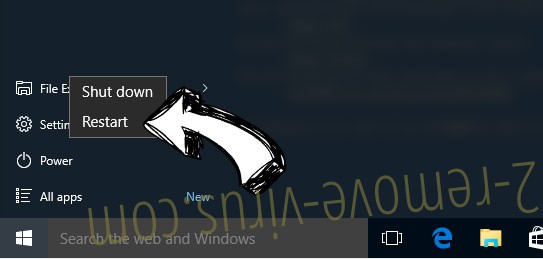
- Go to Troubleshoot → Advanced options → Start Settings.
- Choose Enable Safe Mode or Safe Mode with Networking under Startup Settings.

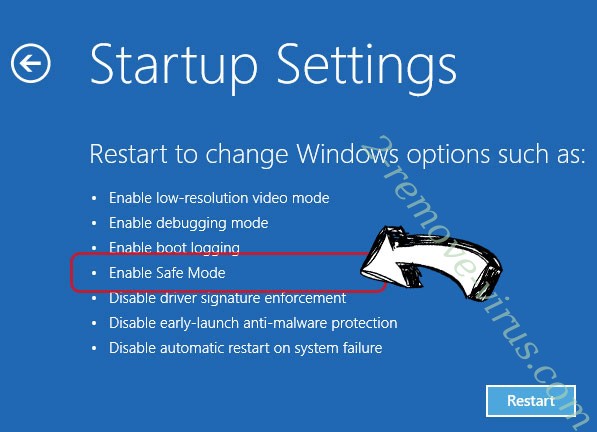
- Click Restart.
- Open your web browser and download the malware remover.
- Use the software to delete Eject ransomware
Step 2. Restore Your Files using System Restore
Delete Eject ransomware from Windows 7/Windows Vista/Windows XP
- Click Start and choose Shutdown.
- Select Restart and OK


- When your PC starts loading, press F8 repeatedly to open Advanced Boot Options
- Choose Command Prompt from the list.

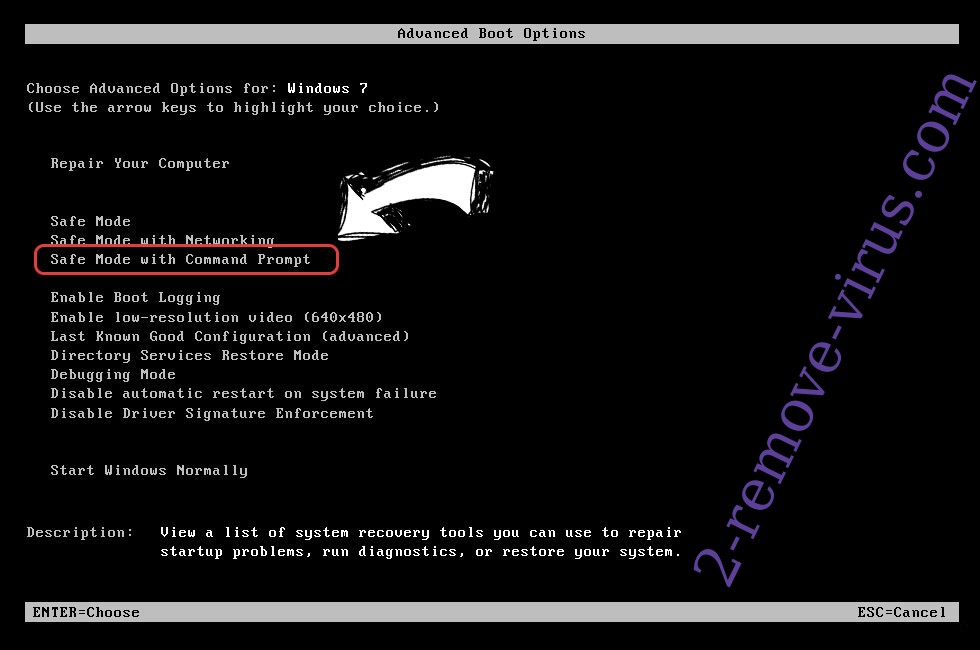
- Type in cd restore and tap Enter.

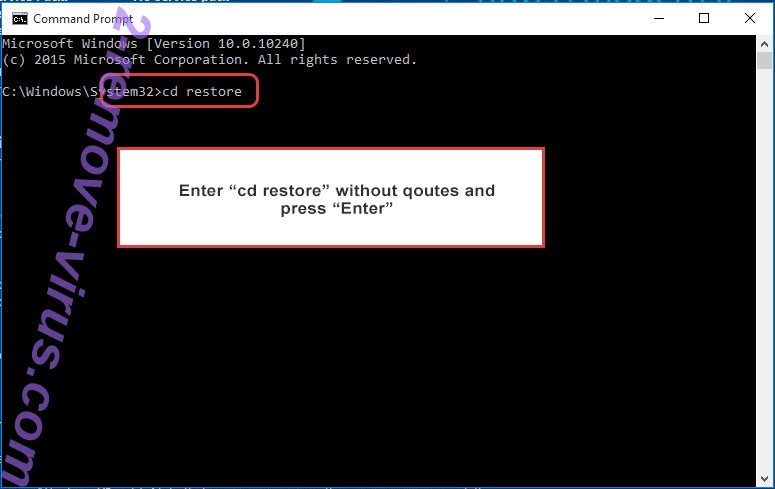
- Type in rstrui.exe and press Enter.

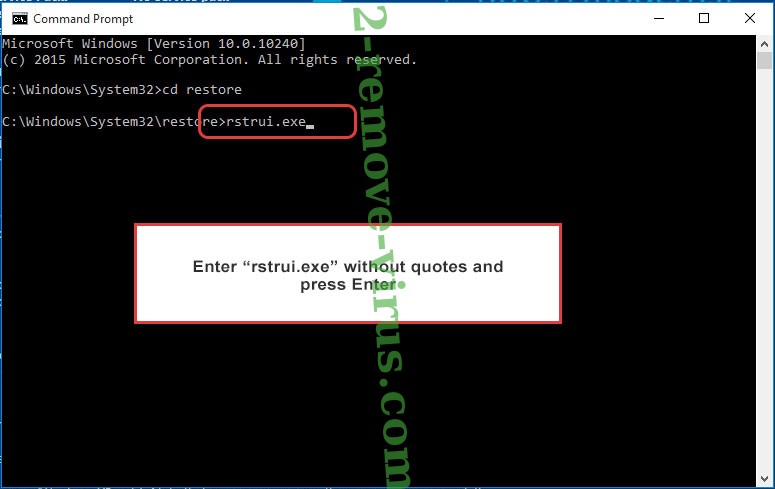
- Click Next in the new window and select the restore point prior to the infection.

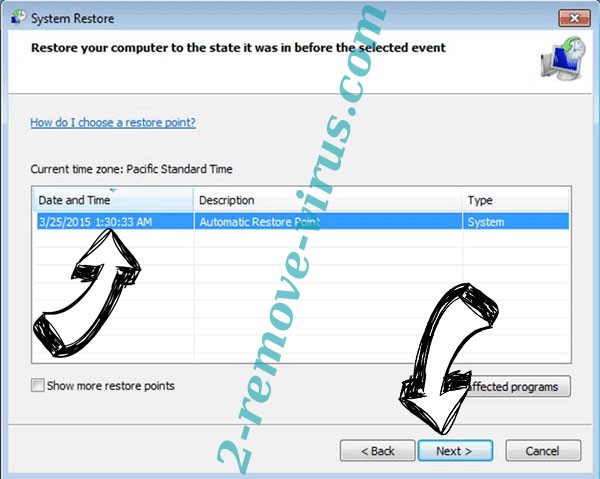
- Click Next again and click Yes to begin the system restore.

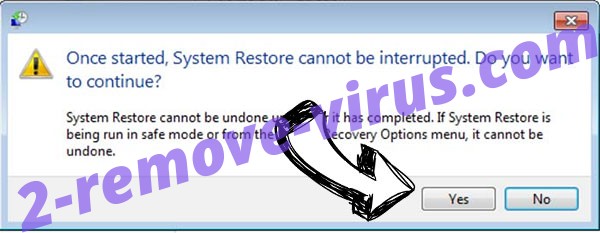
Delete Eject ransomware from Windows 8/Windows 10
- Click the Power button on the Windows login screen.
- Press and hold Shift and click Restart.


- Choose Troubleshoot and go to Advanced options.
- Select Command Prompt and click Restart.

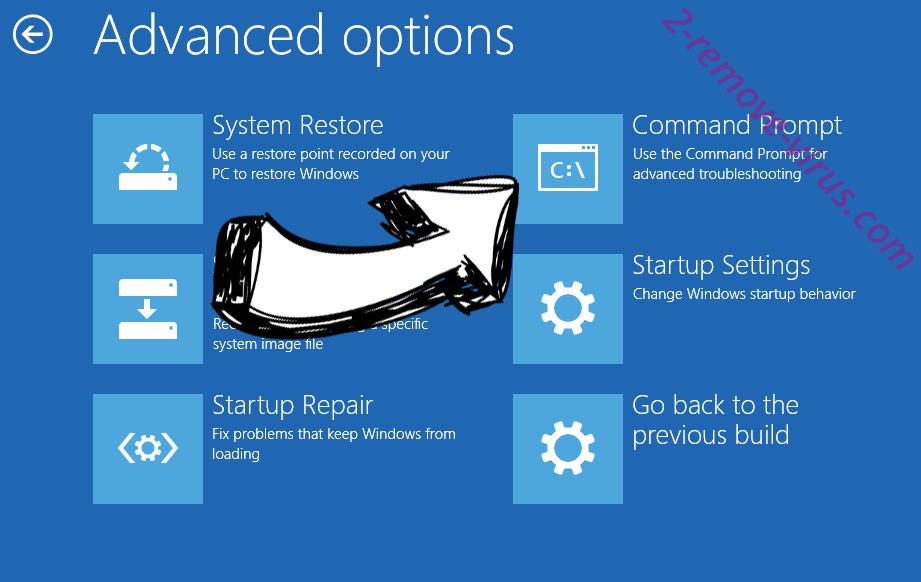
- In Command Prompt, input cd restore and tap Enter.


- Type in rstrui.exe and tap Enter again.


- Click Next in the new System Restore window.

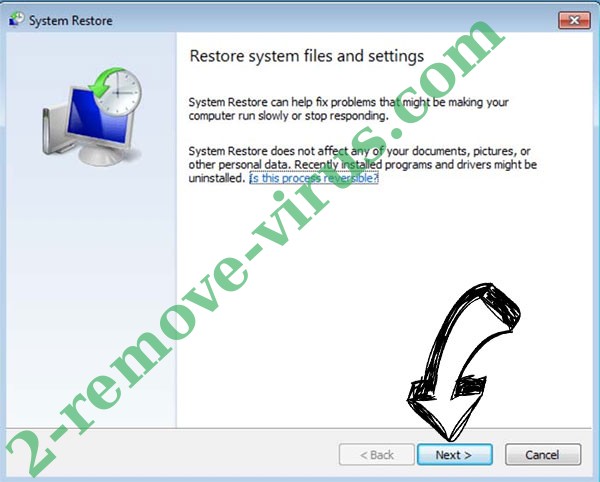
- Choose the restore point prior to the infection.


- Click Next and then click Yes to restore your system.


Site Disclaimer
2-remove-virus.com is not sponsored, owned, affiliated, or linked to malware developers or distributors that are referenced in this article. The article does not promote or endorse any type of malware. We aim at providing useful information that will help computer users to detect and eliminate the unwanted malicious programs from their computers. This can be done manually by following the instructions presented in the article or automatically by implementing the suggested anti-malware tools.
The article is only meant to be used for educational purposes. If you follow the instructions given in the article, you agree to be contracted by the disclaimer. We do not guarantee that the artcile will present you with a solution that removes the malign threats completely. Malware changes constantly, which is why, in some cases, it may be difficult to clean the computer fully by using only the manual removal instructions.
